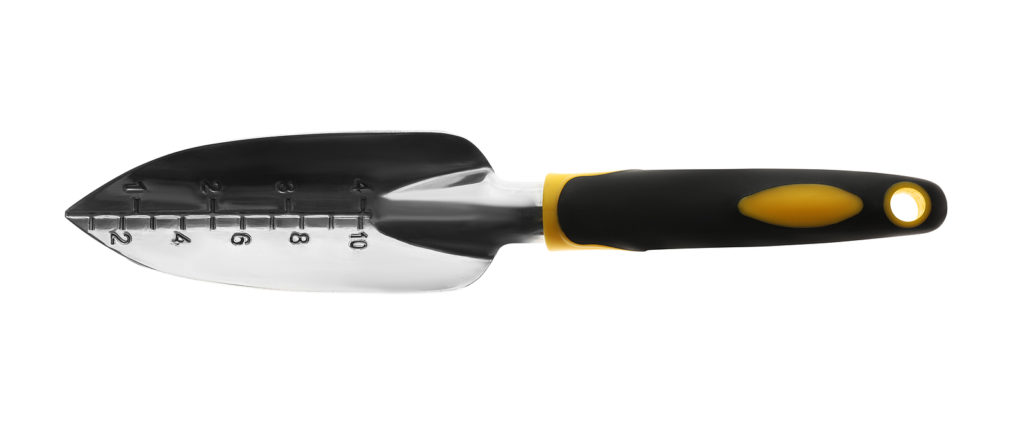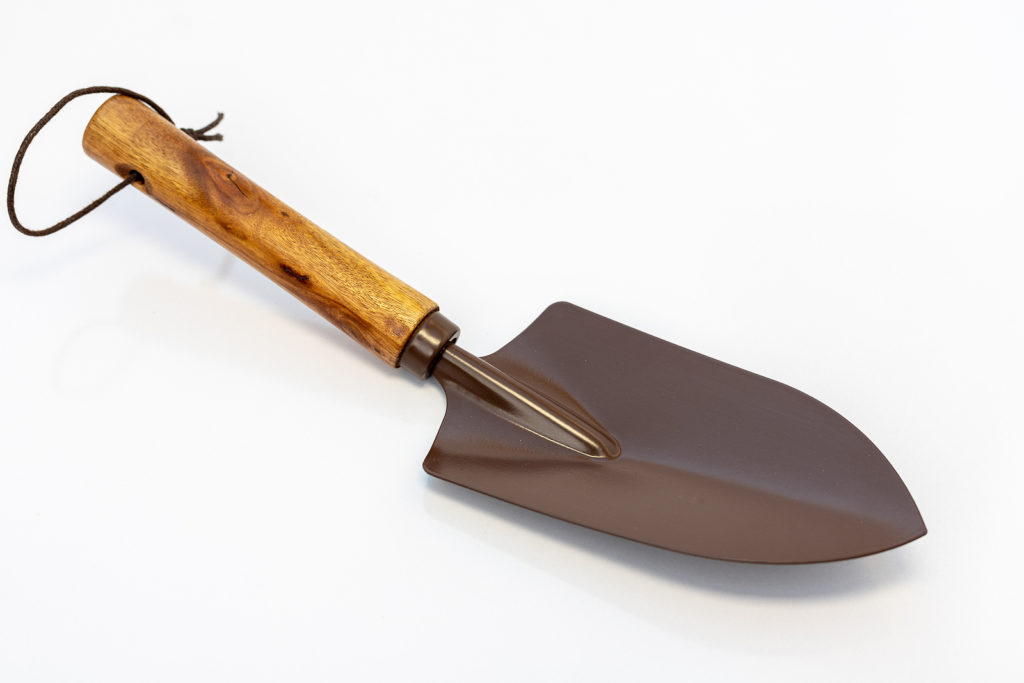A trowel is a small, narrow, hand-held metal scoop used for small digging jobs, such as digging holes for flower and vegetrable transplants. Trowels are used while you kneel or sit.
Trowels are commonly made from one piece of cast metal or a metal blade with a plastic or wooden handle. Trowels have various blade and handle sizes that are suited for a variety of tasks. Transplanting trowels, for example, have extra-narrow blade while multi-purpose towels have wide-blades.
Trowel uses
Trowels are excellent for digging small planting holds and for removing weeds. Use a trowel for digging up and dividing a small perennial. Use a trowel to break up a bale of peat moss or compost. Use a trowel or to scoop potting mix into containers and for planting bulbs. Use a wide blade trowel to move soil. Use a long narrow blade trowel are for digging a hole in compacted clay soil. Some trowels have measurements scribed onto the blade to help dig to a desired planting depth.
Trowel construction
Trowel blades are can be made of tough fordged steel. Some blades are made of light weight and rust-resistant aluminum. Stainless steel trowel blades offer durability.
Trowel handles can be made of wood, fiberglras or metal. The handles are sometimes wrapped in rubber or plastic for a cushioned grip. Some trowels have larger-diameter handles for gardeners who have a weak grip or suffer from arthritis. Som trowels have curved and foam-padded handles.
Some manufacturers offer long-handled trowels with 2- or 3-feet long lightweight handles for use by those gardeners who have trouble bending over. Houseplant trowels have small, nearly minature blades for use in container gardening.

Trowel types
Standard trowel
A standard trowel is made from two pieces: a wooden, metal ,plastic, or fiberglass handle and metal blade with a sharp edge.
One-piece trowel
A one-piece trowel is made from cast lighweight aluminium or other metal alloy or forged heavy-gauge steel. Usually the handle is covered with a colorfull platic grip. The blade on a one-piece steel trowel is often V-shaped rather than curved (adding strength).
Planting or bulb trowel
A bulb trowel has a narrower blade, ususally 2 to 3 inches at the top, tapering down to about 1 inch at the tip, and as much as 6 inches long. The smaller blade can be used to dig a small, narrow hole suitable for planting bulbs, bedding plants, or seedlings. Most bulb trowels have measuring lines stamped into the blades for determining how deep to plant each bulb.
Trowel use tips
- Hold a trowel with your knuckles wraped around the back of the handle and your thumb pointed up, as if if where an icepick; stab the blade into the soil.
- When transplanting, insert the trowel into the soil and open a hole by moving the trowel from side to side; the curve of the blade will form the hole.
- Use a narrow and V-shped blades for digging out weeds and planting bulbs and for piercing heavy soil.
- Use a wider and flatter blade for moving soil and digging large holes in loose soil.
- Use a long handle trowel if you have trouble bending over or kneeling.
Trowel maintenance
Metal trowel blades should be cleaned with an oiled cloth after use and stored in a dry place to avoid rusting.

Trowel buying tips
- Choose a trowel that feels comfortable in your hand.
- Choose a trowel with a bright handle that is easy to find if you lay it down while you are working.
- Try various grips for comfort. Usually a larger grip will be eaiser to use.
- A one-piece aluminum or steel trowel with a plastic or rubber wrapped-handle will be most durable an comfortable. A tang-and-ferrule trowel blade that fits into a separate handle may eventually detach.
- V-shaped blades are strong and less likely to bend.
- Aluminium trowels are lightweight, a consideration for people with arthritis or weak grip but the blade will not be as sharp as a steel blade and cannot be sharpened.
- You may want to buy several sizes of trowels for use in different jobs.
Trowels we like















